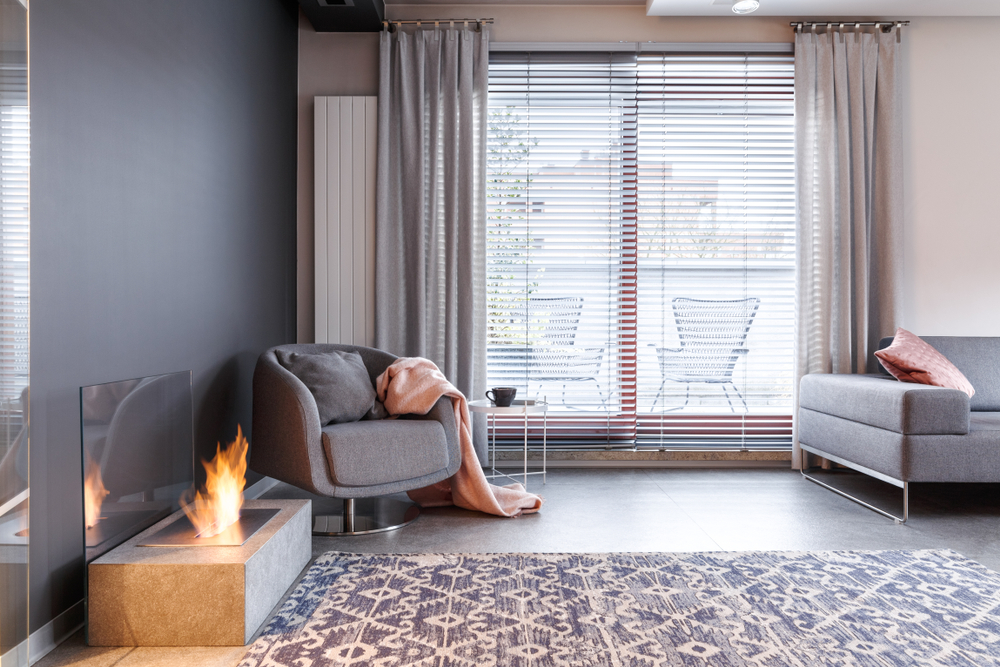Choosing how to cover your windows can be overwhelming due to the variety of options and functions available to you. Blinds, curtains and drapes all have different functionalities and aesthetic appeal.
For example, blinds are hard with adjustable slats and best for light control and those who prefer a more minimalist style. Curtains are soft and lightweight, which makes them ideal for casual spaces such as informal living areas or kitchens. Finally, there are drapes, which are heavier, have lining, and are typically seen as more formal. These are the best if you’re looking for privacy and insulation.
Of course, each of these different options can be used alone or in conjunction with each other such as blinds and drapes. There’s also the consideration of manual and automatic operation, the latter a modern addition to the world of window coverings.

Practical Considerations: Functionality, Style, and Budget
When it comes to choosing the drape, blind or curtain for your space, there are many considerations. You should think about each of the following points carefully. First, the desired level of light filtration, or whether you want total blackout. You should also consider the curtain length if that’s what you’re going for. This can include hover, kiss or puddle lengths, which can change the look and aesthetics of the room. You will need to consider the rod positioning, and the window measurements carefully when doing these measurements to get the right look without overwhelming your room.
Another important consideration is the type of room you’re looking to dress up. For example, drapery suits bedrooms or more formal spaces such as a dining room areas. Curtains on the other hand, are a good option for kitchens or even casual living spaces. Whenever you’re looking at both curtains or drapes, also consider the fabric choice, colour, texture and how it looks compared to any other decor such as wall paint or wallpaper already in the living space.
A complete overhaul can be expensive, but so can minimal changes too. Depending on what you opt for, drapes, blinds and curtains can be expensive. Drapery is typically a lot more expensive than the other two options simply because its heavier, longer material. As such, there are ways you can save. For instance, you can opt for DIY solutions, tailoring premade panels to your room, or you can make your purchases online where you can often find better deals. For example, Dunelm, with both a physical and online store, provides a great starting point for doing up your home without breaking the bank. The company has a wide array of window treatments available, giving you a broad selection. It also regularly provides seasonal and category-based discount codes, which means you can save further. These promotions are available on the Discoup page for Dunelm and they will allow you to purchase higher-end products like the heavier drapery you’ve been admiring, while saving you a little money. Using verified voucher codes when online shopping is a smart way to meet your interior design budget needs. It also means that you can choose drapes, blinds or curtains with better quality materials at a reduced cost, so that you’re not compromising on quality.
Making the Right Choice for Your Space
Once you’ve determined what it is you’re looking for and where you can shop for it, then next step is to combine your visual goals with the technical needs of the space. This includes insulation, privacy or sun control. Some options are better suited to specific environments, which is always worth considering. For instance, blinds are the most versatile, and can be used in any room. This is especially the case where space and precision light control actually matter such as in smaller, box rooms. Curtains are easy to change up once you’ve got the rods in place. This makes them a great option if you want to do some seasonal changes, or need to make rental-friendly updates in your home. Finally, drapes are typically long and to the floor, making them a more luxurious option. Typically they’re seen as a long-term investment, and are best suited to formal, quiet or sun-exposed rooms in the house. Carefully explore all the options keeping in mind practical needs not just the aesthetics.

